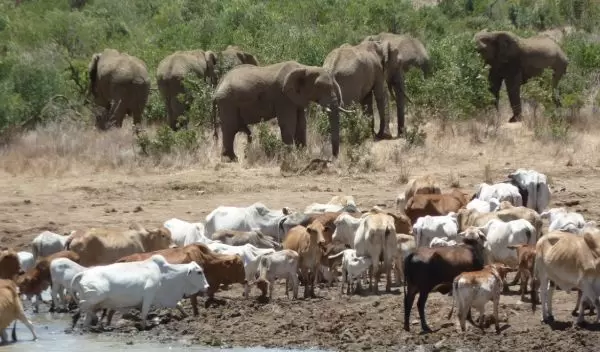
Elephants reverse the cattle-caused depletion of soil carbon and nutrient pools
Wild herbivore populations are declining in many African savannas, a result of replacement by livestock (mainly cattle) and the loss of large plant-eaters, or megaherbivores, such as elephants.
Although some livestock management practices may be compatible with the conservation of native savanna biodiversity, the sustainability of these integrated wild herbivore/livestock management practices is unknown.
For example, how will herbivore mixes influence key processes for the long-term functioning of savanna ecosystems, such as soil carbon, nitrogen and phosphorus pools and cycling? Scientists affiliated with the Kenya Long-term Exclosure Experiment are studying the ecosystem consequences of manipulating the presence of wild herbivores and cattle at moderate densities in a "black cotton" savanna.
In a paper published in the journal Nature Sustainability, the National Science Foundation-funded researchers show that after 20 years, cattle presence decreased total soil carbon and nitrogen pools, while the presence of megaherbivores, mainly elephants, increased these pools and reversed the negative effects of cattle.
The results suggest that a mix of cattle at moderate densities and wild herbivores can be sustainable, provided that the assemblage of wild herbivores includes the largest species, according to ecologist Truman Young of the University of California, Davis, a co-author of the new paper.
"By experimentally manipulating both domestic and wild herbivores in combinations that occur in the real world, this research demonstrates the importance of megaherbivores to sustaining natural savanna ecosystems," said Betsy von Holle, program director in NSF's Division of Environmental Biology.


